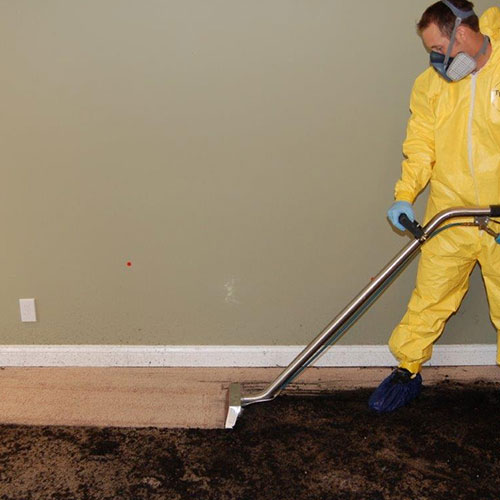

No nightmare can be more terrifying than a sewage backup. Imagine wastewater bubbling up through your drains, flooding your basement, and ruining your carpets and furniture that you’ve spent a fortune on.
Sure you could call a water sewage clean service, but understanding the causes and prevention methods can save you a lot of trouble. Here are 10 common causes of sewage backups and how to prevent them.
Common Causes of Sewage Backups
1. Blocked or Clogged Pipes
Blocked or clogged pipes are the most common culprits behind sewage backups. Often, household items like paper towels, sanitary products, and even cooking grease make their way into the drains, causing blockages.
To prevent this, never flush anything other than toilet paper and human waste down the toilet. Avoid pouring grease down the kitchen sink; instead, dispose of it in a container.
2. Tree Roots
This might not be something you’ve heard before, but tree roots naturally seek out moisture, and your sewer lines are prime targets. They can infiltrate and grow within your pipes, leading to blockages and even pipe damage.
Regularly inspect and maintain your sewer lines to prevent this issue.
3. Damaged Sewer Pipes
Over time, sewer pipes can deteriorate due to age, ground movement, or even poor construction. Cracked, broken, or collapsed pipes can cause significant blockages and backups.
Scheduling regular inspections by a water sewage clean service and opting for trenchless pipe repair methods can mitigate this risk.
4. Heavy Rainfall
If you’re someone who lives in areas where rain is the norm, you’ll notice frequent sewage backups. Heavy rainfall can overwhelm municipal sewer systems, especially if they are outdated or poorly maintained. When the system’s capacity is exceeded, water can back up into homes.
Installing a sump pump and ensuring proper drainage around your home can help manage excess water. Also, consider investing in a backwater valve, which prevents sewage from flowing back into your home.
5. Sewer System Age
Older sewer systems made of cast iron, clay, or Orangeburg materials are more prone to failures. These materials deteriorate over time, leading to leaks and collapses.
Timely replacement of old pipes with modern, durable materials can prevent these issues.
6. Municipal Sewer Problems
Sometimes, the problem isn’t in your home but in the municipal sewer system. Blockages or failures in the city’s system can cause sewage to back up into your home.
While you can’t control municipal maintenance, you can protect your home by installing a backflow prevention device and keeping your local public works informed of any issues.
7. Improper Disposal of Grease and Waste
Pouring grease down the drain might seem harmless, but it can solidify and cause major blockages. Similarly, improper disposal of food waste and other non-degradable items can clog your pipes.
Always dispose of grease in a heat-resistant container and throw it away in the trash. Use strainers in sinks to catch food particles and dispose of them properly.
8. Sump Pump and Gutters Mismanagement
Connecting gutters, downspouts, and sump pumps to the sanitary sewer can overload the system during heavy rainfalls.
Make sure that these are directed to storm sewers or are discharged away from your home’s foundation. Regularly clean gutters and downspouts to ensure they are free of debris and functioning properly.
9. Structural Defects
Structural defects in your home’s plumbing, such as misaligned pipes or faulty seals, can also lead to backups.
These issues can often be detected during routine plumbing inspections. Addressing these defects promptly with the help of a professional plumber can prevent future sewage problems.
10. Flushing Non-Flushable Items
How many times have you put something down the drain without thinking twice about how it’d affect your housing’s drainage system? Many items marketed as ‘flushable,’ like wipes and certain types of cat litter, do not break down in water and can cause blockages.
Educate everyone in your house about what can and cannot be flushed. Stick to flushing only toilet paper and human waste to keep your pipes clear.
Prevention Tips
Prevention is always better than cure — why even run into a problem when you could steer clear of it in the first place?
While not all sewage backups can be prevented, regular maintenance and mindful practices can significantly reduce the risk. Here are some practical tips:
- Regular Inspections: Have your sewer lines inspected every few years by a professional to catch potential problems early
- Proper Disposal: Never flush non-degradable items or pour grease down the drains
- Tree Management: If you have trees near your sewer lines, consider removing them or installing root barriers
- Install Backflow Valves: These devices can prevent sewage from backing up into your home
- Maintain Gutters and Sump Pumps: Ensure they are directed away from the sanitary sewer and are functioning properly
No More Plumbing Nightmares
Understanding the common causes of sewage backups and taking preventive measures can save you a lot of hassle and expense. Let’s be honest, running a household is expensive in itself.
For professional assistance and reliable water and sewage clean service, contact Flood Restoration Pros. Our expert team can handle any sewage backup and help prevent future occurrences. Don’t wait until it’s too late—give us a call today!
